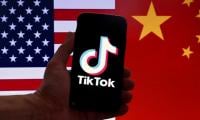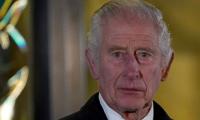WASHINGTON: President Donald Trump Monday fulfilled a campaign pledge by signing an executive order to withdraw from the Trans-Pacific Partnership (TPP).
The trade deal, a linchpin of ex-President Barack Obama's Asia policy, was signed by 12 nations, BBC reported. "Great thing for the American worker what we just did," said Trump as he dumped the pact with a stroke of a pen.
He also cut funding for international groups that provide abortions, and froze hiring of some federal workers. Mr Trump's executive order on TPP was largely symbolic since the deal has not been ratified by a divided US Congress.
The Trump administration's first week day began with a flurry of executive orders, which allow the president to bypass Congress by issuing legally binding directions to federal agencies to take action on anything from White House decorations to foreign policy.
Trump also signed an order blocking foreign aid or federal funding for any nongovernmental organisation that provides abortions abroad. The so-called Mexico City policy was first established by Republican President Ronald Reagan in 1984.
It is typically rescinded by incoming Democratic presidents, including Barack Obama in 2009, and reinstated by Republican presidents. The president also signed an executive action placing a hiring freeze on non-military federal workers.
Also on Monday morning, Trump pledged to "massively" cut regulations and taxes on companies, but impose "a very major border tax" if they move factories outside the US. "All you have to do is stay," he told executives from 12 companies including Lockheed Martin, Under Armour, Whirlpool, Tesla and Johnson & Johnson.
After meeting business leaders at the White House, Trump pledged to lower corporate taxes to 15% or 20%, from the current 35%, and slash regulations by up to 75% if they keep jobs in the US.
"A company that wants to fire all of its people in the United States, and build some factory someplace else, and then thinks that that product is going to just flow across the border into the United States - that's not going to happen," he said.
Kasuri urged authorities of Pakistan and China to pull their resources to defeat forces seeking to disrupt the...
IHC said that several people had not returned the cipher copies they had, and asked if it meant it was right for the...
Gilani gave floor to Leader of Opposition Syed Shibli Faraz, who insisted that with unity they could take country...
Match witnessed intense action and dramatic twists, keeping fans on the edge of their seats until the final ball
Apex court bench was reconstituted after Justice Yahya Afridi recused himself from hearing the case earlier this month
ECP issued a notification in this connection pursuant to orders passed by LHC







